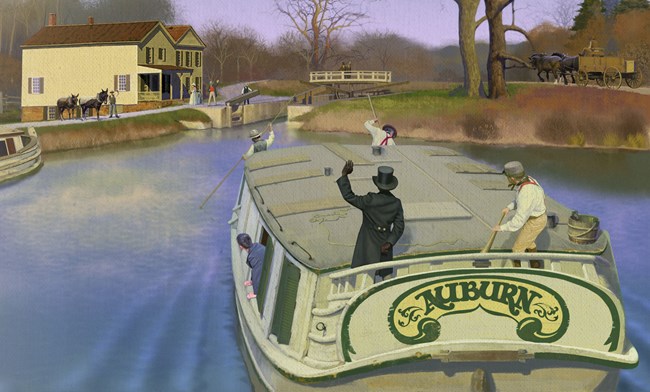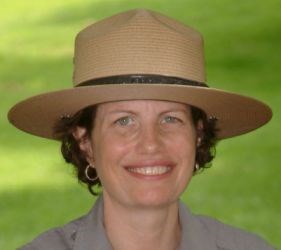Last updated: December 20, 2023
Article
Exploring Black History in Cuyahoga Valley

NPS Collection
The first enslaved Africans in English-occupied North America were brought to Virginia more than 400 years ago. Despite constant adversity, African American culture and heritage have strengthened each generation. In recent years, the National Park Service has expanded its role in protecting significant places in African American heritage and better sharing important stories.
New places are regularly added to the National Park System. Five parks created since 2017 preserve and interpret African American history. Three relate to the Civil Rights era: Medgar and Myrlie Evers Home National Monument in Mississippi; Freedom Riders National Monument in Alabama; and Birmingham Civil Rights National Monument in Alabama. Reconstruction Era National Historical Park in South Carolina explores how the United States grappled with integrating newly freed African Americans into social, political, economic, and labor systems of the country. Harriet Tubman National Historical Park protects the New York home where she fought for human rights and dignity until she died in 1913.
Connections between African American history and Cuyahoga Valley National Park also run deep. They are reflected in the stories of Carl B. Stokes, Jane Edna Hunter, John Malvin, and Lewis Clarke.

City of Cleveland
Carl B. Stokes is a hero in the 1969 Cuyahoga River fire story. Polluted debris caught fire in Cleveland just a few miles north of the national park. Stokes was mayor of Cleveland at the time. The day after the fire, he led local press on a tour to view the fire damage and river pollution. National magazines, including Time and National Geographic, picked up the local press coverage. As a result, the fire became part of national conversations about the need for better environmental protection. Today, we point to contrasting images of the river on fire and the river in the national park to demonstrate what is possible when people work together for clean water.
Jane Edna Hunter’s story connects to Cuyahoga Valley’s role in providing recreational open space for a metropolitan community. Hunter was a prominent social worker who founded the Phillis Wheatley Association (PWA) in Cleveland in 1911 and served as its executive secretary until 1948. PWA provided a variety of social services for Cleveland’s African American community. In 1941, PWA opened Camp Mueller as an overnight camp for youth in the valley.
In 2010, the National Park Service collected oral histories from Camp Mueller participants. Their stories reflect fondness for the camp. Ronald Dodson noted, “I thought I was in heaven when I came out here and had all these woods….There were times that they had to send the counselor out to find me because I’d be out walking somewhere.…They thought I was lost, but I was never lost….Because this was my first experience being in a big park environment—there were not fences, there were no buildings, no traffic noise, no nothing, just woods.”

NPS Image
John Malvin and Lewis Clarke lived during the 1800s, and their stories connect to the Ohio & Erie Canal. The canal extended from the Ohio River through the valley to Lake Erie. Malvin captained a canal boat, The Auburn, and described his experiences in an 1879 autobiography. He noted that he worked with “one white steersman, one colored steersman, two white drivers, one colored bowman, and one colored female cook.”
While Malvin transported mostly freight, he also carried passengers. He tells a story about his experience with one young woman: “When she went down and saw the colored cook, she was completely taken by surprise…. After the bowman had got his lines snugly curled…she accosted him, saying she would like to see the Captain….The lady, after seeing me, suddenly sprang to her feet, and with a great shortness of breath exclaimed ‘Well I Never!’….She refused to go to bed, and sat up all night.”
Malvin responded with excellent service. He noted, “On leaving me she said ‘Captain, I suppose I must have acted awkward. Now I must return my thanks to you and your crew for the kind treatment I have received. I have never traveled so comfortably in all my life.…’”
Because the canal ran from the Ohio River to Lake Erie, it has long been considered a possible route for the underground railroad. Volunteer research assistant Bob Downing recently read through narratives written by people who had been enslaved in search of references to the Ohio & Erie Canal. He found one, provided by Lewis Clarke in his 1845 Narrative of the Sufferings of Lewis Clarke. In his escape from slavery in Kentucky, Clarke crossed the Ohio River into Aberdeen, Ohio, and made his way to Portsmouth. From there, he purchased a ticket to travel to Cleveland on the canal. He then took a boat across Lake Erie to Canada, where he stayed briefly before coming back to Ohio. He went on to become a well-known advocate for black civil rights and the basis for a character in Harriet Beecher Stowe's novel, Uncle Tom's Cabin. He is buried in Oberlin.
The stories we preserve say something about us as a society, reflecting who we see as important. They give us a better understanding of how we got to where we are today and where we might want to go in the future.

NPS / Moto Photo
Jennie Vasarhelyi leads the division of interpretation, education and visitor services at Cuyahoga Valley National Park. Her guest columns appear in the West Side Leader and in Record-Courier newspapers in Northeast Ohio.
